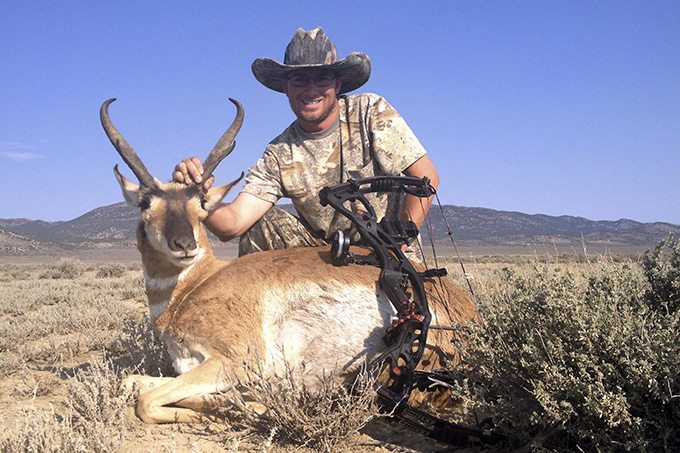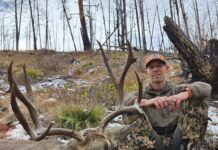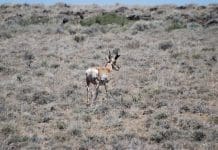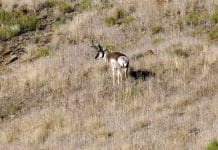Pony Express Pronghorn!
Guest Contributor – Andrew Miller
I snap back to reality, blurry-eyed and wrought with defeat. The thin film of dust and dehydration on my pallet guarded by salty, cracked lips is a cruel reminder of what spot and stalk antelope hunting is all about. Under my breath I asked myself sarcastically, “Are we having fun yet?”

The ever supportive voice in the back of my head reassures me that the cactus in my palms, blisters on my heels and the consistent stimulation of my surroundings are all things I wouldn’t have been able to experience from behind the walls of a camouflaged blind. These are just painful reminders that I am the one who chose to spot and stalk antelope with a bow and arrow.
The 2012 antelope season was already proving to be far more difficult than I ever expected. I had hunted antelope previously with my rifle, but this year I was convinced I could make it happen with the bow. This challenge forced me to re-learn antelope hunting from a new perspective. I had to figure out what distances the antelope would allow a bowhunter to approach, what they would allow me to get away with and what they wouldn’t tolerate. I had to examine what their weaknesses were and figure out how on earth I could exploit them. With ankle high grass for cover and water galore it was obvious that I had my hands full.
With each stalk, I took notice of what alarmed the antelope but also what calmed them. I was observing a few wild horses on the prairie when I noticed that the horses and antelope would both focus their attention on the same small patches of cover where danger might lurk. Sometimes the antelope would watch the horses and rely on them for a safe lookout and other times the horses would key in on warning signs from the antelope.
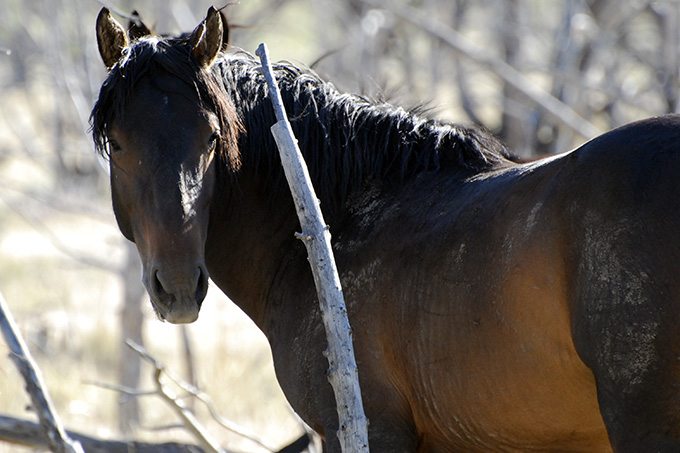
Weakness identified! “Never trust a horse” I said to myself. After 5 days of playing numerous games of cat and mouse (think Tom & Jerry), I had finally realized I needed become “friends” with the antelope. That was my last afternoon of pounding the prairie on hands and knees because I decided to try stalking the antelope with one of my own horses.

As expected, my first horse stalk failed, but I closed the distance to 80 yards with relative ease. That was a far cry better than I had done previously crawling around in the dust and rocks. With a new enthusiasm, I diligently continued my hunt for a decent buck who was a good candidate for my second horse-stalk. I was anxious to prove my new tactic could actually work.
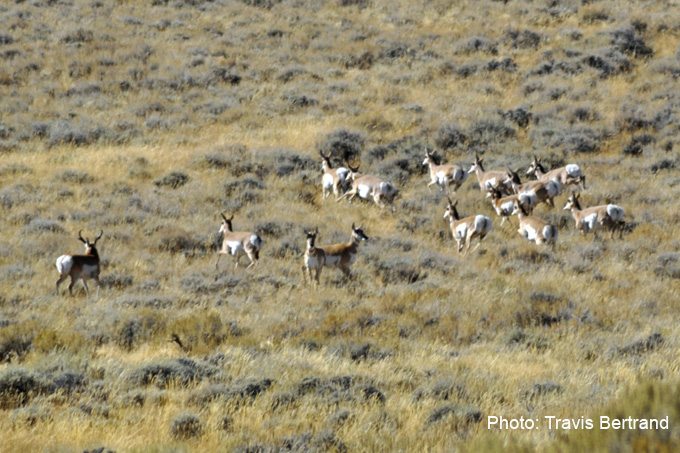
I located a good buck in a herd of about 20 antelope and began my stalk from better than ½ mile away. I knew that this distance would give me the cushion needed to slowly approach the buck from a “safe” distance giving him ample time to accept my “Trojan horse” as a friend. I planned to spend as long as it took to close the distance. My technique was to let the horse graze as naturally as possible and then periodically lead the horse from the off-side gradually toward the antelope. I repeated this zigzag, indirect approach until well after noon when I finally reached the 100 yard mark. Things were working as planned, but the last 100 yards is when a bowhunt just starts to get interesting.
I knew I couldn’t afford to rush the stalk now. I continued forward without ever walking directly toward the antelope. Although I slowed my approach I still cut the distance in half over the next hour. Finally, I felt that I was within my effective range. I was giddy with anticipation – I was standing there in the wide open prairie with nothing between me and 20 antelope but my horse! The buck I wanted was bedded facing away from me, calmly chewing his cud.
I still had the moment of truth to face. After a few calming breaths, I drew my bow, stepped away from my horse and sent the arrow on its way. Thankfully, my arrow found its mark and after a short race the antelope piled up in a dusty crash! I thanked my trusty steed and wandered over to claim my hard earned prize.
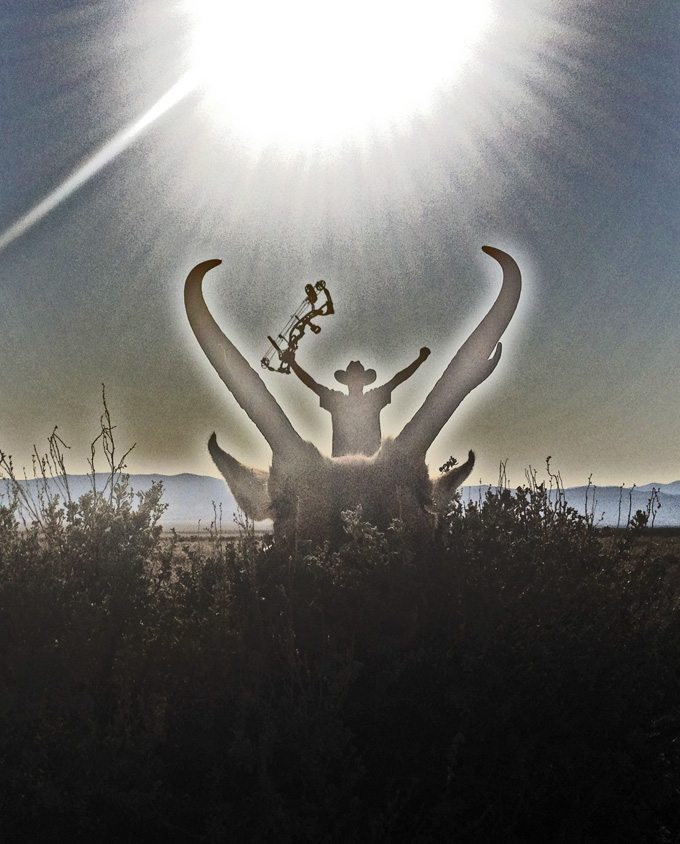
I didn’t really miss crawling around in the dust, rocks, and cactus too much after all. I did appreciate having my horse along. Aside from being the perfect cover, he also provided some much needed shade and helped me pack my buck out. I guess that made up for the hassle of hauling a horse trailer around to carry my “portable” antelope blind.
